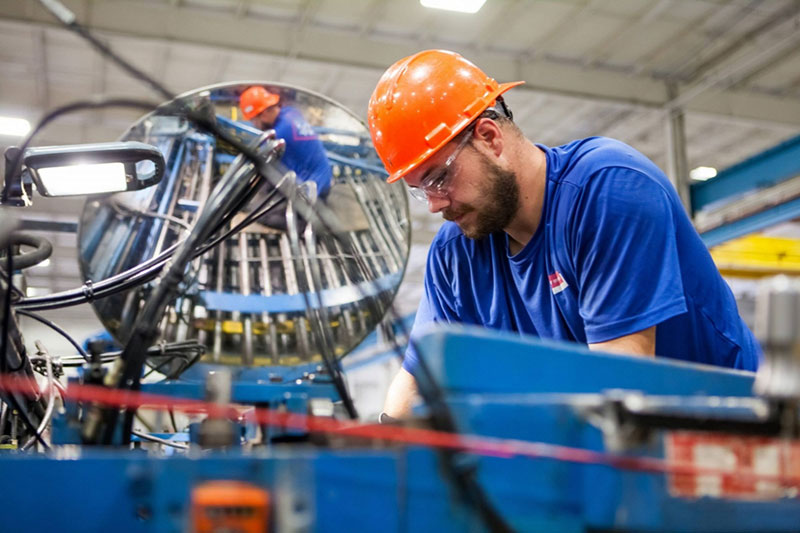Rising consumer demand is propelling the supply chain industry to adopt new technologies. The supply chain companies are turning to wearables and robotics to increase accuracy, speed, and safety on the warehouse floor.
Read more LUBA Workers’ Comp Using Oura Ring To Explore The Use of Wearables in Workplace
Industrial wearables: A huge market
In June 2019, a report published by Research and Markets predicted that the industrial wearable devices market will exceed $2.78 billion by 2024, increasing annually at a rate of 9.2%, with smartwatches holding the largest share of growth, reports SDCExec.
Similar market growth is expected with industrial robots, commonly used for tasks such as picking, loading orders, and transportation, among other order fulfillment jobs. Around $2.4 billion is spent annually on industrial robotic arms and automation machines, according to McKinsey & Company report. A few years ago, there were at least 2 million robots in use on factory floors, warehouses, and similar locations, and the report predicted that number to increase to 4.4 million by 2023.
The advancing wearable technology
TeamViewer uses AI, the Internet of Things (IoT), and augmented reality (AR) in its technology.
“TeamViewer helps companies like DHL, Coke or Airbus to improve quality, speed, and safety of their logistics, manufacturing, and maintenance operations,” says Percy Stocker, TeamViewer’s executive vice president, AR Americas. “Using AR-guided workflows and ad-hoc video collaboration, companies can digitize and streamline their processes, while offering a more ergonomic and intuitive solution to their frontline workers.
Companies use TeamViewer to improve quality, speed, and safety in their operations.
“For example, DHL managed to improve the speed of their logistics operation by 15% on average. Coke significantly improved their quality to 99.99% accuracy level,” Stocker says.

The rising popularity of safety wearables
In 2019, a CDC report nodded the use of wearables to monitor workers’ health, environmental hazards, and other issues. The report said that the tools can be valuable in maintaining the safety of workers in industrial settings. Kenzen makes wearables that can predict and prevent injuries on the warehouse floor.
Wearables can improve efficiency
In the near future, wearables will be considered essential to warehouse and distribution center operations, according to Ilhan Kolko, chief product officer at ProGlove.
“Wearable scanners enhance these processes at large because they easily cut the total scanning time in half,” Kolko says. “Aside from the massive time gain, workers always have their hands free, which is tremendous relief when you load or unload a truck.”
Wearables can maintain privacy
Heidi Lehmann, co-founder of Kenzen says that workers need to know their privacy is maintained while wearing the devices.
“We need to make sure the worker is very comfortable with our solution,” she says. “This begins with the actual comfort of the device when worn by a worker, to worker privacy and making sure the worker understands that the platform has been designed with their privacy in mind.”
According to Lehmann, the worker’s own biometric information can be seen only by the workers themselves in detail and in real time.
Read more KINETIC-JLG Partnership To Deploy COVID-19 Safety Wearables For Industrial Workers
“Other user groups only see the information they need to keep the worker safe,” she says. “For example, a safety manager would understand, through the team dashboard, when a worker is calibrating in a dangerous direction and needs assistance or needs to rest, yet they don’t see any specific personal health details, only that an intervention may be needed.”












